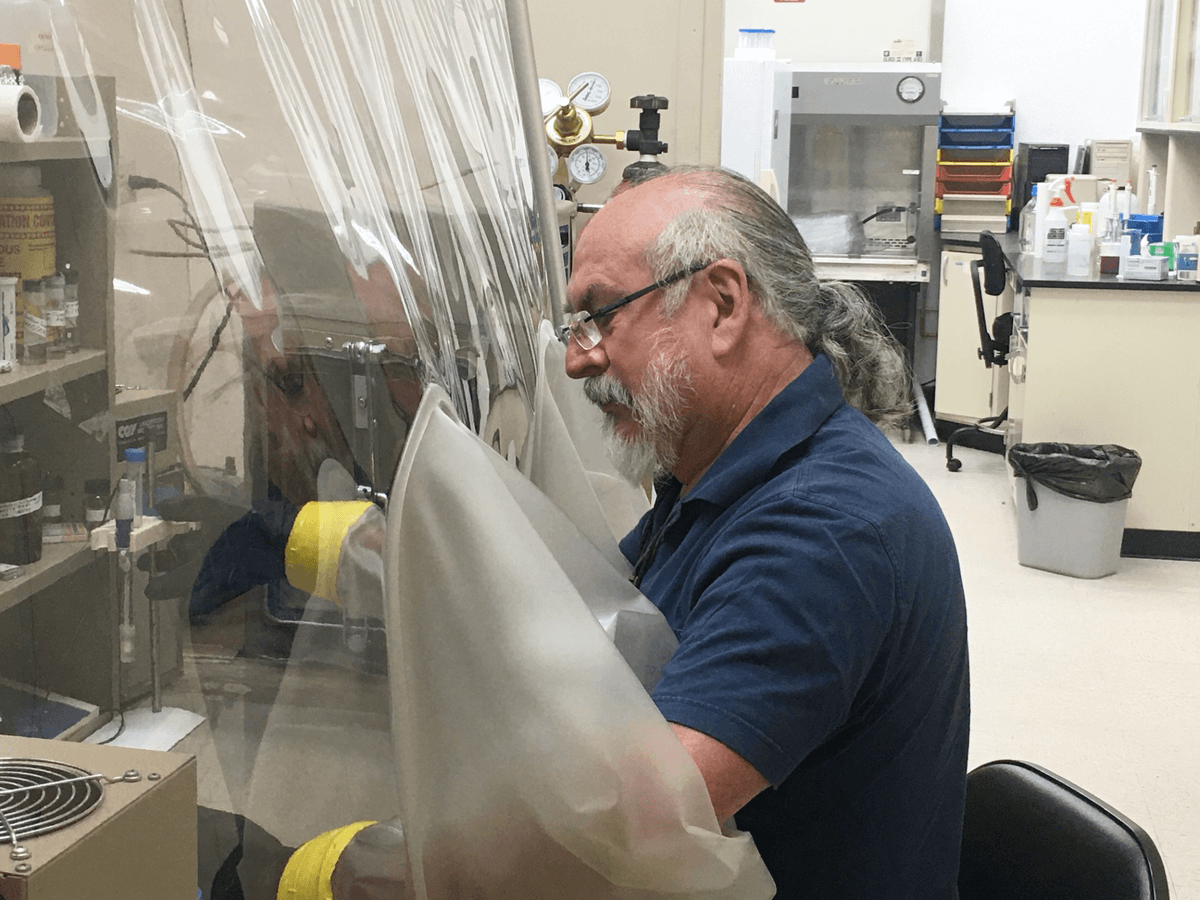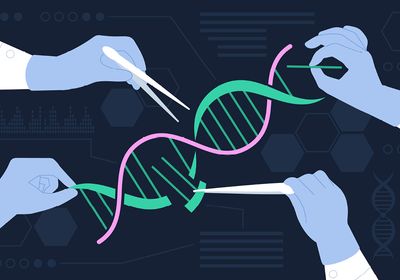ABOVE: Artifacts and coprolites from the Huecoid and Saladoid peoples enable scientists to learn about these bygone cultures. Yvonne Narganes and Luis Chanlatte
Artifacts like King Tutankhamun’s iconic blue and gold funerary mask or the enormous, intricately carved Aztec sun stone offer beautiful and informative insights into long gone civilizations. But another, albeit less glamorous, type of artifact provides equally valuable information about ancient peoples: the humble coprolites. Although they may look like nothing more than pale rocks, these fossilized feces are treasure troves of genetic material, offering clues not only about the producer of the feces, but also about ancient diets and lifestyles.
In a new study published in PLOS One, microbiologist Gary Toranzos at the University of Puerto Rico and his team used coprolite DNA to peek into the lives of the Huecoid and Saladoid people, two pre-Columbian indigenous groups that inhabited the island of Vieques in Puerto Rico for more than a millennium.1 The DNA they identified from plants consumed for nutritional as well as potentially medicinal or ceremonial purposes helps scientists piece together the practices of these bygone cultures.

For most of his career, Toranzos focused on environmental microbiology, studying the pathogens that find their ways into water systems, often via sewage contamination. “As such, I’ve worked with a lot of poop over the years,” he quipped. So when fellow microbiologist Raul Cano, the California Polytechnic State University researcher who famously revived 25 million year old bacterial spores preserved in amber, introduced him to coprolites more than a decade ago, he was immediately intrigued.2
At first, he was skeptical about the possibility of finding ancient DNA in Puerto Rico’s decidedly tropical climate. “At the time, the dogma was that DNA couldn’t survive very long in humid places because water is one of the key ingredients in DNA degradation,” said Toranzos. “Boy, were we wrong.”
See also “Parasites in Ancient Poo Reflect Neolithic Settlers’ Lifestyle”
In 2013, the group published their findings on the bacteria, fungi, and archaea that had inhabited the guts of these long deceased individuals; they reported distinct microbial fingerprints that supported the hypothesis that the Huecoid and Saladoid peoples were in fact separate ethnic groups, not merely subcultures.3
In the present study, the researchers sought to determine the diets of these ancient peoples by examining plant and plant associated fungi DNA in coprolites. Accounts written by Spanish colonists suggested that the indigenous peoples of the Caribbean islands largely subsisted on cassava, also called manioc or yuca. However, the coprolites told a much different story, revealing a variety of edible plants, including maize, sweet potato, chili pepper, tomato, peanut, and papaya. Somewhat unexpectedly, they did not find evidence of cassava, although, said Toranzos, that doesn’t necessarily mean it was absent from the indigenous diet. Rather, the bitter variety of cassava present on the islands would have required extensive processing to remove the highly toxic cyanogenic compounds before it was safe to eat, which could have substantially degraded the DNA.
“This was a really interesting study,” said John Blong, an environmental archaeologist at Washington State University who was not involved in the study. “They showed that there’s a lot more diversity to people’s diets in the past than we typically think of, which is a common theme in coprolite studies.”
The researchers also found evidence of nonfood plants, including tobacco and cotton. While tobacco has been traditionally used by indigenous peoples of the Americas for thousands of years, the presence of cotton in the coprolites was harder to explain. It’s possible that they consumed cottonseeds or cottonseed oils despite their bitter flavor, but Toranzos said, “There’s another plausible explanation. While weaving, women may have wet the cotton threads with saliva to make them easier to work with. Then, the possibility of the fibers, which are loaded with DNA, ending up in the stomach is rather large.”
“Things like this are really interesting insights into cultural practices that we aren’t normally able to investigate,” said Blong. And while this is only a potential explanation for the presence of cotton, he said, “In coprolite analysis, we see some glimmers of evidence for people using their mouths as tools for processing plant materials.”
See also “What’s Next for Ancient DNA Studies After the Nobel?”
Toranzos noted that the variety of plants consumed by these early inhabitants of Puerto Rico may have been even greater than suggested in this study. This is because plant DNA sequence databases largely focus on plants that are commercially important in modern times. Thus, there may have been DNA from many more types of edible plants that are extinct or simply not economically relevant today.
“The great story for me is that this has given us a look into what life 2,000 years ago was like,” said Toranzos. “We’re often taught, one way or another, that these ancient groups were really dumb. But all of these things that we’re finding point to the possibility of trade, including trade between the continent and the islands in the Caribbean. These were very sophisticated cultures, so there’s a lot that still needs to be elucidated.”
References
- Reynoso-García J, et al. Edible flora in pre-Columbian Caribbean coprolites: Expected and unexpected data. PLoS One. 2023;18(10):e0292077.
- Cano RJ, Borucki MK. Revival and identification of bacterial spores in 25- to 40-million-year-old Dominican amber. Science. 1995;268(5213):1060-1064.
- Santiago-Rodriguez TM, et al. Microbial communities in pre-Columbian coprolites. PLoS One. 2013;8(6):e65191.







